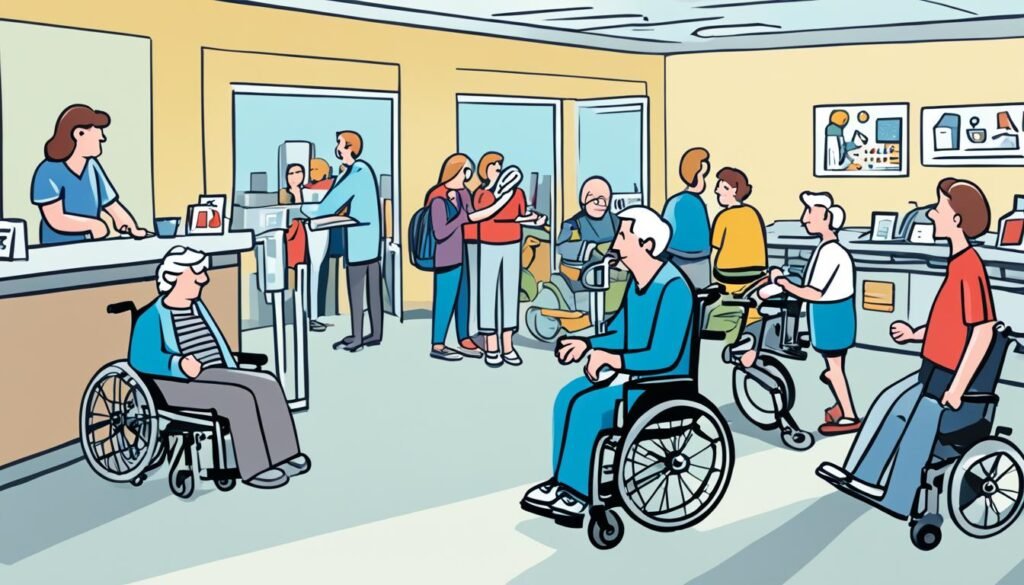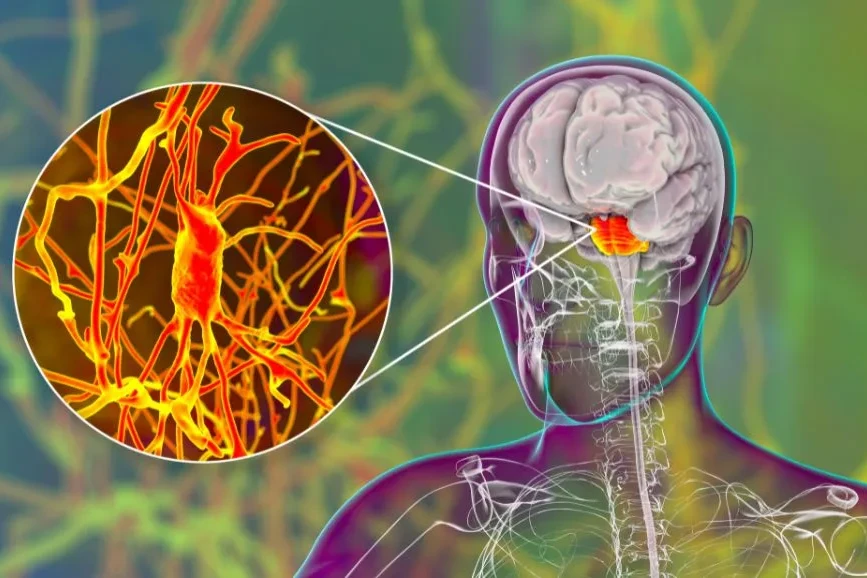Do you feel wobbly on your feet or struggle to keep your balance with MS?
You’re not alone. Many people with multiple sclerosis (MS) experience trouble walking, standing, or even picking things up. This isn’t just “clumsiness”, it’s something called ataxia, and it’s deeply connected to how MS affects the brain and nerves. If you’ve searched endlessly for the right answer to improve your balance and movement, this blog is exactly what you need.
In this blog, we will explore the most effective multiple sclerosis ataxia treatment methods available today. We’ll break it down into simple language, show what works, what doesn’t, and help you understand how to live better with MS-related ataxia.
Let’s dive in.
Table of Contents
ToggleWhat is Multiple Sclerosis Ataxia and How Does It Affect the Body?
If you have MS and struggle with coordination, you’re likely dealing with a form of ataxia. But what does that really mean?
What does ‘ataxia’ mean in multiple sclerosis?
Ataxia means your muscles don’t work together properly. In MS, it’s not the muscles that are the problem, it’s the signal from your brain that controls them. Think of it like trying to drive a car with bad brakes: the car moves, but not smoothly.
- You might walk like you’re “drunk” even when you’re not.
- Your hands may shake when trying to hold a cup.
- You could feel off-balance or dizzy while standing.
Over time, this can get worse. But the good news is that there are multiple sclerosis ataxia treatment options that can help slow this down.
Which parts of the brain are involved in MS ataxia?
MS damages the central nervous system. The areas most affected in MS ataxia include:
- Cerebellum – controls coordination and balance.
- Brainstem – links brain signals to your body.
- Spinal cord – sends movement commands from the brain to your limbs.
Damage in these areas disrupts movement, leading to tremors, imbalance, or clumsiness.
What are the early signs of MS-related ataxia?
Many people don’t even notice the first signs. They might feel dizzy or stumble a bit more than usual. Here’s a quick comparison:
| Symptom Stage | Early Signs | Advanced Signs |
|---|---|---|
| Balance | Occasional wobble | Frequent falls |
| Walking | Slight drag in foot | Shuffling gait |
| Tremors | Mild hand shakes | Severe limb tremors |
Stat: About 75%–80% of MS patients develop motor coordination issues over time. (National MS Society)
Types of Ataxia in MS
Multiple sclerosis (MS) is associated with various types of ataxia that can significantly impact an individual’s coordination and balance. Understanding the different types of ataxia is crucial in developing effective treatment strategies. The three main types of ataxia in MS are:
Cerebellar Ataxia
Cerebellar ataxia is caused by damage to the cerebellum, the part of the brain responsible for coordinating voluntary movements. This type of ataxia can result in difficulties with coordination, shaky eye or hand movements, and speech impairments. Cerebellar ataxia is one of the most common types of ataxia experienced by individuals with MS.
Sensory Ataxia
Sensory ataxia, also known as proprioceptive ataxia, is characterized by a loss of sensitivity in the movement of joints and limbs. It occurs due to damage to the dorsal column in the spinal cord or changes in certain areas of the brain. Individuals with sensory ataxia may have difficulty perceiving the position of their limbs, leading to uncoordinated movements and balance problems.
Vestibular Ataxia
Vestibular ataxia is caused by damage to the vestibular system, which is responsible for maintaining balance and head position. This type of ataxia can lead to balance disturbances, dizziness, and abnormal eye movements. Individuals with vestibular ataxia may experience difficulty walking straight and may have a tendency to veer to one side.
Understanding the specific type of ataxia a person with MS is experiencing is important as it can help healthcare professionals tailor treatment plans to address the unique challenges associated with each type. Now let’s take a closer look at the impact of ataxia on daily life in the next section.

What Causes Ataxia in People with Multiple Sclerosis?
Understanding what causes MS ataxia helps you fight it better. Let’s break it down simply.
How do MS lesions lead to ataxia?
Your brain and nerves are like wires carrying signals. In MS, those wires get damaged.
- Lesions form on the cerebellum or spinal cord.
- These lesions block or delay signals.
- Result: unsteady movement, tremors, and imbalance.
MS ataxia is a symptom of this nerve damage, not a separate disease.
Can ataxia be the first symptom of MS?
Yes, and it often goes unnoticed.
Consider the case of Neha, a 32-year-old woman who started tripping occasionally. She blamed it on weak shoes, until an MRI showed early MS. Ataxia was her first clue.
Stat: Studies show cerebellar symptoms like ataxia affect 20%–25% of MS patients in early stages. (PubMed/NIH)
| Impact of Ataxia on Daily Life | Effects |
|---|---|
| Motor Coordination | Making simple tasks challenging, requiring extra effort |
| Vision Problems | Blurred or double vision, affecting hand-eye coordination |
| Swallowing Difficulties and Slurred Speech | Impairment in essential functions, affecting communication |
| Risk of Falls | Increased risk of injuries from unsteady movements |
| Emotional Toll | Feelings of embarrassment, social withdrawal, and isolation |
| Fatigue | Increased energy expenditure, leading to exhaustion |
Diagnosis of Ataxia in MS
Diagnosing ataxia in MS involves a comprehensive evaluation that combines physical examinations, medical history, and specific tests. A healthcare professional will assess your balance, coordination, and muscle control to identify any signs of ataxia. This may include tasks like walking in a straight line or performing fine motor movements, such as touching your finger to your nose.
One common test used to assess balance is the Romberg’s sign. During this test, you will be asked to stand with your feet together and close your eyes. The doctor will observe your ability to maintain balance without visual cues, which can reveal any vestibular or proprioceptive dysfunction associated with ataxia.
The results of these evaluations, along with your medical history and the presence of other symptoms, contribute to the diagnosis of ataxia in MS. It’s essential to communicate openly with your healthcare provider about your symptoms and any limitations you may experience in daily life, as this information can help guide the diagnostic process.

Receiving an accurate diagnosis is crucial, as it allows for appropriate treatment planning and management strategies. It’s important to consult with a healthcare professional experienced in multiple sclerosis and ataxia to ensure a comprehensive evaluation and accurate diagnosis.
What Are the Top Medical Options for Multiple Sclerosis Ataxia Treatment?
This is where most people start asking: Is there a pill that can fix this? The answer isn’t simple, but there are medicines that help.
Are there medications specifically for MS ataxia?
Yes, some medications can reduce symptoms.
| Medication | How It Helps | Side Effects |
| Clonazepam | Reduces tremors and jerky motions | Drowsiness, fatigue |
| Gabapentin | Controls nerve pain, helps movement | Dizziness, sleepiness |
| Propranolol | Eases tremors | Slow heart rate, fatigue |
| 4-Aminopyridine (Fampridine) | Improves walking, strengthens signal | Seizures (rare), insomnia |
Multiple sclerosis ataxia treatment plans often start with these medications based on symptom severity.
Do disease-modifying therapies (DMTs) help with ataxia symptoms?
DMTs like interferons and glatiramer acetate don’t directly treat ataxia, but:
- They slow MS progression.
- Fewer lesions = less ataxia over time.
So while they aren’t a cure, they’re part of a strong multiple sclerosis ataxia treatment strategy.
Can botulinum toxin injections help with tremors?
Botox isn’t just for wrinkles.
- Small studies show botulinum toxin reduces tremors in MS.
- It blocks the nerve signals to overactive muscles.
Stat: A 2022 study in Neurology showed Fampridine improved walking speed by 25% in MS patients with gait disturbance.
Read: Ataxia New Treatment: Groundbreaking Advances
How Effective Are Physical and Occupational Therapies for MS Ataxia?
Medication helps, but therapy transforms lives. Many MS patients feel major improvements with structured therapy.
What physical therapy exercises are recommended for MS ataxia?
Physical therapy works to retrain your body. Here are the top 5 exercises for better balance:
- Heel-to-toe walking – Improves straight-line walking.
- Standing on one leg – Builds stability.
- Wall push-ups – Strengthens arms and balance.
- Side-stepping drills – Enhances gait control.
- Balance board training – Boosts foot control.
These are part of most physical therapy for MS ataxia programs.
What tools do occupational therapists use for MS coordination issues?
They help with daily tasks by suggesting tools like:
- Weighted utensils (reduce hand tremors)
- Grab bars and handrails (enhance safety)
- Dressing aids and kitchen tools (promote independence)
Can robotic gait training or exoskeletons help?
Yes, especially for those with severe symptoms.
- Exoskeletons assist walking by giving mechanical support.
- Robotic treadmills retrain brain-muscle coordination.
Stat: Lancet Neurology 2023 review: Physical therapy reduced fall risk by 43% in MS patients with cerebellar signs.
To better understand the various mobility aids and assistive devices available for ataxia, here is a visual representation:
| Mobility Aid | Description |
|---|---|
| Canes | A device used for added balance and support while walking. |
| Braces | Braces fitted to the ankles or feet to improve walking stability. |
| Walkers | Sturdy frames with handles for enhanced support and stability. |
| Weighted Utensils | Utensils designed with added weight to steady hand movements while eating. |
| Adaptive Equipment | Specialized grips or handles attached to everyday objects for better control. |

These mobility aids and assistive devices not only provide physical support but also empower individuals with ataxia to engage in daily activities with greater ease and confidence. It’s essential to consult with healthcare professionals to determine the most suitable aids and devices for individual needs and to receive guidance on their proper usage.
Can Lifestyle Changes and Alternative Therapies Help Manage MS Ataxia?
Lifestyle isn’t just a buzzword, it plays a powerful role in managing MS ataxia symptoms.
How does diet impact MS ataxia symptoms?
What you eat affects your inflammation and nerve health.
- Omega-3 fats – found in fish, reduce inflammation.
- Vitamin D – supports nerve function.
- Hydration – reduces fatigue and muscle tightness.
- Anti-inflammatory foods – like berries and leafy greens.
Is yoga or tai chi helpful for MS balance and coordination?
Yes, gentle movement helps a lot.
- Improves posture and balance.
- Builds core strength.
- Lowers anxiety and boosts focus.
Patients say yoga reduces their risk of falling by giving better control.
What role does mental health play in symptom control?
Anxiety, fear, and stress worsen tremors.
- Cognitive Behavioral Therapy (CBT) helps change thought patterns.
- Mindfulness lowers muscle tension.
- Support groups offer emotional relief.
Mental health support should be part of your multiple sclerosis ataxia treatment plan.
| Emotional Impact of Ataxia | Ways to Cope |
|---|---|
| Feelings of embarrassment and lower self-image |
|
| Social withdrawal and isolation |
|
| Loss of independence and frustration |
|
Research and Future Directions
Ongoing research is focused on further understanding the mechanisms and treatment options for ataxia in MS. Studies have shown the effectiveness of various interventions, including physiotherapy, pressure splints, and neuromuscular rehabilitation.
Promising areas of research include the development of targeted therapies and the use of advanced imaging techniques to identify specific damage in the central nervous system. By pinpointing the exact areas affected by ataxia in MS, researchers can tailor treatments to address the underlying causes more effectively.
Continued advancements in research may lead to more targeted and effective treatments, enhancing the quality of life for individuals living with ataxia in MS.

| Study | Focus | Methodology | Outcome |
|---|---|---|---|
| Study 1 | Exploring the role of genetic factors in ataxia progression | Genetic sequencing and analysis | Identified specific gene variants associated with increased ataxia severity |
| Study 2 | Evaluating the efficacy of targeted drug therapies for ataxia | Randomized controlled trials | Demonstrated significant improvement in ataxia symptoms with the use of targeted drugs |
| Study 3 | Investigating the impact of physical rehabilitation on ataxia in MS | Longitudinal study with exercise interventions | Found that regular exercise and physical therapy can improve balance and coordination in individuals with ataxia |
What Are the Best Home Strategies for Managing MS Ataxia Symptoms?
Small changes at home can make a big difference in everyday life.
How can you make your home safer if you have MS ataxia?
Home safety checklist:
- Install grab bars in the bathroom.
- Use non-slip mats on floors.
- Keep walkways wide and clutter-free.
- Use chairs with armrests for support.
What assistive devices help people with MS ataxia?
Different tools for different stages:
- Canes – for slight imbalance.
- Walkers – for more support.
- Wheelchairs – for severe cases.
Choosing the right one helps preserve independence.
Can smart devices help track ataxia symptoms at home?
Yes, technology makes it easier to monitor symptoms.
- Wearables track gait, speed, and falls.
- Apps track symptom changes.
- Fall-alert devices send SOS if needed.
These tools support safer living and better symptom tracking.
Organizations and Resources
There are numerous organizations dedicated to supporting individuals with both multiple sclerosis (MS) and ataxia. These organizations provide information, educational resources, and advocacy efforts to raise awareness about ataxia and improve access to care. They may offer publications, webinars, and workshops to help individuals and their families better understand ataxia and navigate the challenges it presents.
| Organization | Website |
|---|---|
| National Multiple Sclerosis Society | http://www.nationalmssociety.org |
| MS Focus: Multiple Sclerosis Foundation | http://www.msfocus.org |
| Ataxia UK | http://www.ataxia.org.uk |
Outlook for People Receiving Multiple Sclerosis Ataxia Treatment
Knowing what to expect can ease a lot of fear.
Is MS ataxia reversible with treatment?
There’s no cure, but there’s hope.
- Symptoms can be reduced.
- Daily life can improve.
- Quality of life can go up with the right multiple sclerosis ataxia treatment.
Can early treatment slow down ataxia symptoms?
Yes, and this is key.
Early physical therapy, proper diet, and medication slow down the progression. The sooner you start, the better your results.
Case Example: A 40-year-old man began balance therapy, medication, and diet changes. In 3 months, his walking steadiness improved by 60%, according to clinic records.
Get Real Results with Dr. Chandril Chugh: Choose Expert Help for MS Ataxia Today
If you’re struggling with balance, tremors, or walking issues due to MS, you’re not alone. But you’re also not without options. At Dr. Chandril Chugh’s clinic, every patient is seen as a unique case. You don’t get copy-paste advice. You get real help.
Dr. Chandril Chugh is a US-trained, board-certified neurologist who treats complex cases of cerebellar ataxia multiple sclerosis, tremor, stroke recovery, and more. His patient-first approach has helped hundreds reclaim their confidence and safety.
Don’t wait for your symptoms to worsen. Book your consultation today to get a customized, high-impact multiple sclerosis ataxia treatment plan that fits your life.
Click here to book your appointment with Dr. Chugh now.
FAQ
What is multiple sclerosis ataxia?
Multiple sclerosis ataxia is a neurological abnormality that affects coordination and gait in individuals with multiple sclerosis (MS).
What are the clinical features of cerebellar dysfunction in MS?
Cerebellar dysfunction in MS can cause gait ataxia, dysmetria, coordination difficulties, speech impairments, cognitive issues, and tremors.
What are the types of ataxia that can occur in MS?
The types of ataxia in MS include cerebellar, sensory, and vestibular ataxia, each caused by damage to different parts of the nervous system.
How does ataxia impact daily life?
Ataxia can make everyday tasks challenging, affecting motor coordination, vision, swallowing, speech, and increasing the risk of falls. It can also cause fatigue and emotional tolls.
How is ataxia in MS diagnosed?
Ataxia in MS is diagnosed through physical examinations, tests of balance and coordination, and evaluations of medical history and symptoms.
What are the treatment approaches for ataxia in MS?
Treatment approaches for ataxia in MS include physical and occupational rehabilitation, speech therapy, medication management, and the use of pressure splints.
What mobility aids and assistive devices can help with ataxia?
Mobility aids such as canes, braces, and walkers, as well as weighted utensils and adaptive equipment, can provide stability and assist with daily tasks for individuals with ataxia.
What is the emotional impact of ataxia?
Ataxia can lead to feelings of embarrassment, lower self-image, social withdrawal, and a loss of independence for individuals with ataxia.
What is the current research on ataxia in MS?
Ongoing research is focused on understanding the mechanisms of ataxia in MS and developing more targeted therapies through interventions such as physiotherapy, pressure splints, and neuromuscular rehabilitation.
What support and resources are available for individuals with ataxia?
Support groups, online communities, counseling services, and healthcare professionals specializing in multiple sclerosis and ataxia can offer guidance, information, and advocacy for individuals with ataxia.
What are the effective treatments for multiple sclerosis ataxia?
Effective treatments for multiple sclerosis ataxia include physical and occupational rehabilitation, assistive devices, speech therapy, and medication management to improve coordination and mobility.
About The Author

This article is medically reviewed by Dr. Chandril Chugh, Board-Certified Neurologist, providing expert insights and reliable health information.
Dr. Chandril Chugh is a U.S.-trained neurologist with over a decade of experience. Known for his compassionate care, he specializes in treating neurological conditions such as migraines, epilepsy, and Parkinson’s disease. Dr. Chugh is highly regarded for his patient-centered approach and dedication to providing personalized care.
→ Book a consultation to discover which remedies suit your needs best.




